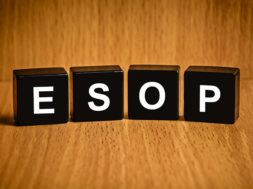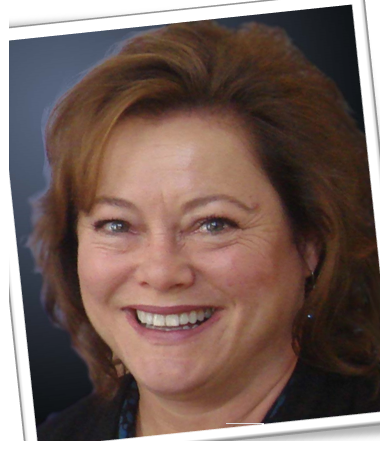
ESOP – What Owners Need to Know
Interview with Liby Lentz, Vice President/Human Resources Director, Pima Medical Institute
CER: Tell us a little about your background?
Liby Lentz: In my 35-year career, I have worked in all areas of human resources in the education and healthcare sectors. I have been with Pima Medical Institute since 1993 and lead all aspects of Human Resources. I also administer and manage our ESOP plan.
CER: What is an employee stock ownership plan (ESOP)?
Liby: ESOPs are deferred compensation plans (long term retirement plan) governed by The Employee Retirement Income Security Act of 1974 (ERISA). Many people think of an ESOP plan, similar to that of a 401(k). However, unlike a 401(k), employees typically do not contribute any cash to the plan, but receive shares of stock in their account annually while employed. Plan assets are held in a trust for future distributions to participants.
CER: When and why did Pima Medical Institute choose to create an ESOP?
Liby: In 2002. ESOPs are a common exit strategy for owners/founders of companies as they are a vehicle for providing (transferring/sharing) ownership to employees once the owner retires.
CER: How many campuses and employees does Pima Medical Institute have?
Liby: Approximately 1100 employees and 18 campuses.
CER: How do you create an ESOP?
Liby: ESOPs are a type of employee benefit plan. A company sets up a trust fund into which it contributes new shares of its own stock or cash to buy existing shares. The ESOP is allowed to borrow money from the company to buy new or existing shares, with the company making cash contributions to the plan to enable the plan to repay the loan. Regardless of how the plan acquires stock, company contributions to the trust are tax-deductible with certain limits.
Shares in the trust are allocated to individual participant accounts. Participants need to be 21 years old to participate. Typically, allocations are made on the basis of employee compensation. After six (6) years of participation, participants are 100 percent vested in the ESOP.
CER: What were the major hurdles of creating an ESOP?
Liby: The company has to be a willing buyer of the shares from the founder of the company. Then the company loans the shares over a period of years to the ESOP, who annually allocates shares into participants’ accounts. Typically, the company and the ESOP establish a 10 (10) year loan (after purchasing the shares from the founder). The loan is often an internal loan between the company and the ESOP, however, sometimes the company borrows funds from a bank/lending agency. Shares are held in suspense and released over a ten-year period while paying down the loan.
CER: What are the benefits for the employer?
Liby: Once an ESOP becomes a sub S corporation and is 100 percent employee-owned, the company does not pay federal taxes, but may pay a very small amount of state taxes. In lieu of paying federal taxes, the company is funding employee retirement accounts. 100 percent ownership means that all shares are held in the trust for future allocations into participants’ accounts. 100 percent means the company is 100 percent employee-owned … there are no other owners. Currently, PMI is owned by the ESOP and by the family.
CER: What are the benefits for the employees?
Liby: Most ESOP companies offer their employees a primary retirement plan like a 401(k), and the ESOP is a secondary retirement plan. As the value of the company grows, due to the collaborative efforts of all employee-owners, the share price increases thereby growing the participants’ accounts. Most ESOPs have financial metrics and goals they share with the employee-owners; most ESOP companies practice open book management principles (OBM). OBM is a philosophy of sharing financial information with all employees. At Pima Medical Institute, each year we share financial goals and company growth plans with all employees. It’s important that employee-owners understand the income statement, the critical numbers/drivers, growth goals and share the company vision to grow the company.
CER: How did the employees feel about the ESOP?
Liby: It takes about 3 years for new employees to grasp and understand the concept and mechanics of the ESOP. Once they connect the dots on how their job and their performance affects the company goals and targets, the ESOP becomes easier to understand. Each year they receive a stock certificate which includes the value of their account, the amount of shares they have and their vesting percentage.
CER: What happens when an employee leaves?
Liby: It depends on their account balance and age upon departure. If they have less than $50,000 in their individual account, they get cashed out the year after they leave the company. They can choose to roll it into an IRA or take the distribution in cash. If they have over $50,000 in their account and are under the age of 65, they must wait five (5) years before they can take a distribution, typically in installments over a five-year period. If they have more than $50,000 and are over age 65, then installment distributions begin the year after they retire/resign from the company.
CER: What advice would you give other schools looking into creating an ESOP?
Liby: When education and information are shared with employee owners, ESOP’s can be quite successful. ESOP companies have higher employee engagement due to their increased involvement in setting company goals and having a better understanding of company operations.
CER: Is there anything you would like to add that wasn’t discussed?
Liby: Pima Medical Institute has been a proud employee-owned company since 2002. According to a recent analysis, fewer than 1 in 200 companies in the United States are employee-owned. At Pima Medical Institute, our leadership recognized the importance of employees having a stake in the company’s success. Our founder Richard Luebke, Sr. left an incredible legacy, and the creation of the ESOP was one of many ways he showed that he truly cared about not just the education of our students, but the overall success of our employees.
LIBY LENTZ is Vice President/Human Resources Director with Pima Medical Institute. During her more than 25 years with Pima Medical Institute, Ms. Lentz has developed an HR Department responsible for the implementation of several innovative employee programs, many of which have contributed significantly to the growth and long-term success of the company. Lentz oversees all aspects of HR including payroll, benefits employment, and wellness programs for the 1,100+ employees. In addition, she serves as a corporate advisor to all campus directors in matters related to human resources and employee relations. She also administers and manages Pima Medical’s Employee Stock Ownership Plan, and collaborates with Plan trustees. Her career experience encompasses all aspects of HR in both the healthcare and education industries. Lentz earned a Master of Arts in Human Resource Management from the University of Phoenix and a Bachelor of Science in Business Administration from the University of Arizona.
Contact Information: Liby Lentz // Vice President and Human Resources Director // Pima Medical Institute // pmi.edu // https://www.facebook.com/pimamedicalinstitute/ // Twitter: @PimaMedical // Instagram: pimamedical







